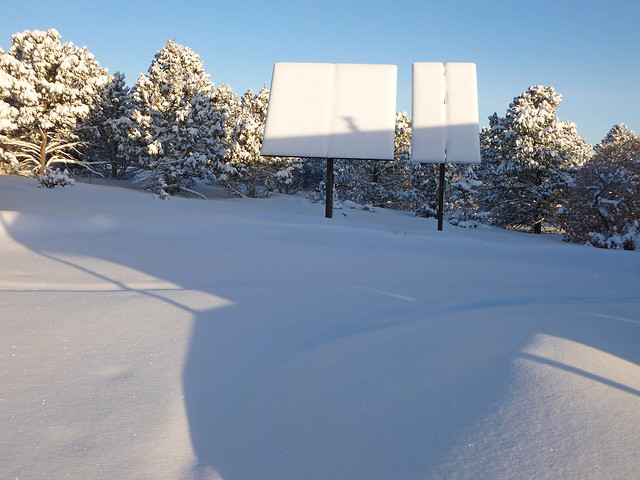Taking a look at the weather, I see above freezing temps for the foreseeable future (10 days). I am going to disconnect the lead acid batteries and reconnect the Tesla battery modules.
About those lead acid batteries. As I was expecting, they are too low of capacity to be of much practical use for directly charging the car. I get about 3-4 miles of range out of them, directly charging the car. The other issue is the reduced capacity of the array during winter. This winter I had several weeks of complete shading due to snow. So not a whole lot of energy available from mid December into mid February. We did get some warm days and eventually melted the snow from the panels. But I don't see much value in trying to up-size my lead acid battery bank at this time. Although on a sunny day, even in the winter, I can charge the 12 volt bank from dead empty to full charge cut off by noon.
On the other hand I am exploring using this arrangement during the winter to provide constant 12 volt supply/charging for the Tesla. This would eliminate vampire drain at least, which would be like adding 4 miles of range a day. Another side benefit of that would be is it will extend the life of the 12 volt battery on the car, as it would reduce the number cycles it is required to perform daily. I would use a 24 to 12VDC DC-DC converter regulate the voltage going into the car and limit the maximum drain from the battery bank. I would then connect the 12 volt side to a 12 volt plug adapter to plug into the 12 volt supply port inside the car or add an external one to the front of the car. Similar arrangement that
@Ingineer uses to store his Tesla's only this would be completely solar powered. I think there is enough power produced by this setup to work.




